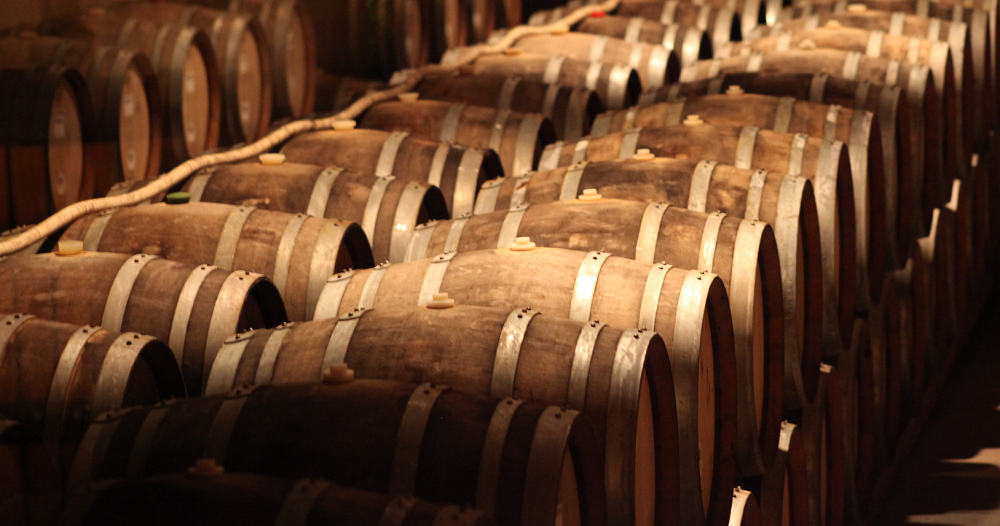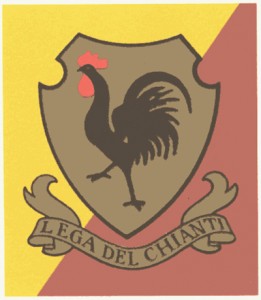
Two of the producers I visited during my recent trip to Walla Walla were Pepper Bridge Winery and Amavi Cellars. At a first glance these two brands are not recognizably related to each other, but look a little more closely and you’ll find a business structure that traces its history back to 18th century France.
Leading châteaux in Bordeaux often have a second brand (and sometimes even a third and a fourth beyond that). The practice originated as a way to get more value out of batches of wine deemed unsuitable for use in le grand vin, such as, for example, wine coming from a recently replanted section of a vineyard. Over time, however, le second vin has become an integral part of French wine marketing strategy.
Second label wines are generally not advertised or promoted alongside the first label, though some producers do market their second label as an earlier drinking version of the senior wine. On the other hand, the wineries make no attempt to hide the connection between the two– indeed, they intentionally choose second label names that are recognizable variants of the primary brand so they can discreetly leverage the cachet of their name.
Le second vin provides advantages to both wine producers and wine lovers. Wine brought to market under a second label earns much more money for the vineyard than any sold as bulk wine. Consumers get a wine made by a leading winemaker using grapes from one or more of the world’s most famous vineyards, typically for a price well below that of the top brand.
They may not share a name (after all, neither has centuries of fame to build on), but look at the Amavi and Pepper Bridge websites and you’ll find entire sections that are word-for-word identical. You will also find that both are owned by the same people, their grapes come from the same vineyards, and their wines are made by the same winemaker. One brand focuses on wines built for aging which are marketed at a higher price point, the other makes wines “to be enjoyed in a relatively short time period (in wine terms) following purchase.”
That fits the Bordeaux model pretty closely, and would seem to have the potential to yield similar benefits for both the public and the wineries. Of course, emulating French marketing practice does not lead directly to the production of quality wine but, as I discovered, Pepper Bridge and Amavi are also able to deliver the goods.
Pepper Bridge Winery
In this pairing, Pepper Bridge Winery takes the role of le grand vin. They make a variety of blends, which feature different combinations of the five red Bordeaux varieties. All these wines are meant to age for a bit before drinking and to last even longer.
2013 Merlot, $50
Pepper Bridge calls it “Merlot”, but you can think of it as “Right Bank Blend” as that’s clearly the target winemaker Jean-François Pellet is aiming at. This 2013 is a medium ruby color with purple glints that signal its youth. Aromas of plum and baking spices are followed by plum flavors with moderate tannins, a silky mouthfeel, and a lingering finish. Still tight, this is a wine that will benefit from a few years of bottle aging to allow the flavors to emerge more fully. 78% Merlot, 13% Cabernet Franc, 9% Malbec. 1,306 cases made.
2013 Cabernet Sauvignon, $60
The 2013 Pepper Bridge Cabernet Sauvignon (“Left Bank Blend”) demonstrates both the richness of the Cabernet grape and the subtle power of blending. Its complex nose features aromas of plum, cinnamon, and nutmeg. An equally intriguing palate includes flavors black cherry, plum, and baking spice. A little rough around the edges now, give it a few years for everything to integrate. The wait should be worth it. 83% Cabernet Sauvignon, 9% Merlot, 4% Malbec, 2% Cabernet Franc, 2% Petit Verdot. 2,097 cases produced.
Pepper Bridge Trine, $65
The Pepper Bridge website explains the name of this wine as follows:
The word “trine” (it rhymes with “wine”) is defined as a close group of three, and this wine pays homage to the families of Pepper Bridge: the McKibbens, Goffs, and Pellets. As with our Cabernet Sauvignon and Merlot, Trine showcases the best of our Walla Walla Valley estate vineyards. However, it allows Winemaker Jean-François Pellet more freedom of expression since it is a creative blend rather than a varietal-based wine. Each vintage will contain a unique combination of Bordeaux’s traditional five red grapes.
I had the opportunity to taste two vintages of this wine, 2012 and 2013, which made for an interesting comparison. The 2012 growing season has been described as a “classic” Washington State season, producing “near-perfect” grapes. By comparison, 2013 was much warmer (one of the warmest on record), though the heat broke in September allowing for additional hang time and flavor development. In general, the 2013s are more approachable now while the 2012s need more time to develop, and that’s what we see here.
Pepper Bridge says that the 2012 Trine is the first in which Cabernet Franc is the dominant varietal. Interesting choice. Dark and earthy with a strong oak note and a savory quality, this is a wine that is tightly wound now, with just a flash of cherry/berry flavor before the tannins hit. While it clearly needs time to develop, I was also left with a sense that there might not be enough fruit to carry it all the way. Time will tell. 37% Cabernet Franc, 27% Cabernet Sauvignon, 23%Merlot, 7% Malbec and 6% Petit Verdot. 711 cases made.
The 2013 Trine opens with enticing aromas of spice and tea that give way to complex dark fruit and spice flavors. Here the Cabernet Franc adds depth and elegance to the other grapes in the blend. Benefitting from the warm 2013 season, this wine is drinking well now but still has plenty of room to grow. 37% Cabernet Sauvignon, 34% Cabernet Franc, 15% Merlot, 9% Malbec and 5% Petit Verdot. 912 cases made.
Amavi Cellars
Amavi Cellars follows the second vin model in producing earlier drinking wines at a lower price point, putting a Walla Walla spin on the concept in not restricting themselves to Bordeaux varieties or styles.
2015 Semillion, $24
Amavi’s version of a white Bordeaux blend is a pale golden with bright eye-catching glints. It presents a light nose of apricot. Lemon flavors mingle with just a hint of melon with crisp acidity. A nice seafood wine. 88% Sémillon, 12% Sauvignon Blanc. 869 cases produced.
2013 Syrah, $33
The deep ruby color with purple notes of this wine sets expectations of big and young, and that’s just what you get. A tight nose with notes of spices and black currant is followed by flavors of black currant, pepper, and green olive wrapped in moderately strong tannins. It’s an intriguing mix that I’d like to see last just a bit longer in the mouth. Ready now if you like greener flavors in wine, hold for a couple years if you don’t. 98% Syrah, 2% Grenache. 3,080 cases produced.
Another dark ruby beauty with just a touch of purple, Amavi’s Cabernet Sauvignon is a big, rich wine that is ready to rock and roll now. Enticing aromas of plum, cassis, and baking spice. A touch of oak sweetness is followed by lovely plum flavors and well-balanced tannins. 76% Cabernet Sauvignon, 11% Cabernet Franc, 8% Merlot, 3% Malbec, 1% Syrah, 1% Petit Verdot. 6,387 cases produced.

 The original reason for putting wine into wood barrels was to make it easier to move. Amphorae and dolia made from clay were a proven solution for wine storage and could be transported reasonably well by ship, but their weight and fragility made them much less suitable for going any distance over land. The Mesopotamians are believed to be the first to use wooden barrels to carry wine. These were manufactured by hollowing out palm tree trunks, a time-consuming and expensive process, and their use did not spread outside of the Middle East.
The original reason for putting wine into wood barrels was to make it easier to move. Amphorae and dolia made from clay were a proven solution for wine storage and could be transported reasonably well by ship, but their weight and fragility made them much less suitable for going any distance over land. The Mesopotamians are believed to be the first to use wooden barrels to carry wine. These were manufactured by hollowing out palm tree trunks, a time-consuming and expensive process, and their use did not spread outside of the Middle East.